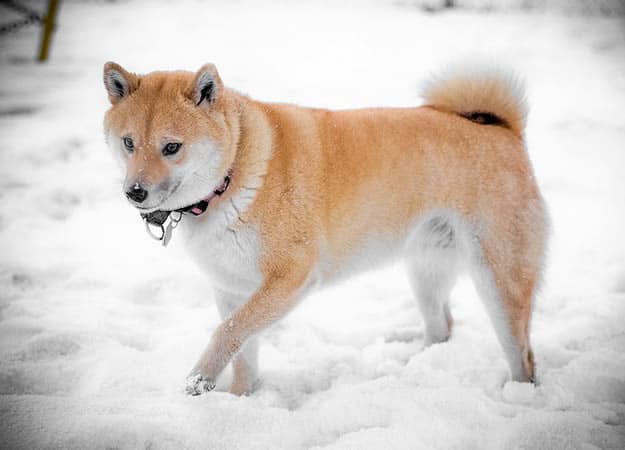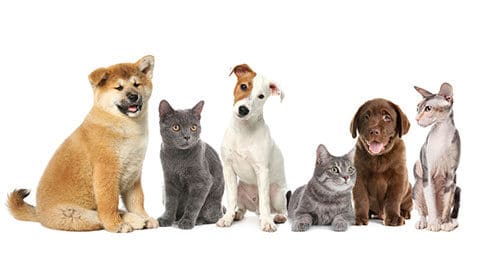
Cold Weather Dangers for Pets
Here in Vermont where I live, the Vermont Temperatures are dropping, and with the colder weather, the Vermont Veterinary Medical Association wants you to know it’s time to think about the dangers this presents for our pets, both indoors and outdoors-only ones. By taking a few common sense precautions, you can help reduce the cold weather dangers to your pets.
Although some pets are conditioned to cold weather, veterinary experts agree that you should bring outdoor pets indoors if the temperature drops below 20 degrees Fahrenheit. Puppies, kittens, and short haired pets should not be left outside for extended periods anytime the temperature goes below 40 degrees. For pets with long hair, proper grooming is essential to help them maintain a layer of warming air within their coat. Pets who are heavily matted cannot keep themselves warm.
Winter Hazards for Cats & Dogs
If your pet must stay outdoors, be sure to provide shelter for your pet: they can suffer from frostbite and hypothermia just like we do. A pet’s outdoor house must have at least three enclosed sides, be elevated off the ground, and contain generous amounts of bedding such as straw or hay. In cold weather, bigger is not always better. A house just big enough for your pet will warm up faster and retain heat better than something that is too big. Your outdoor pet will need access to fresh water that isn’t frozen. Use heated water bowls and replenish them frequently.

Consider keeping dogs on a leash when they go outside. Each winter we see cases of dogs that have gone off exploring “frozen” lakes or streams and fall through the ice into the frigid water.
Inside the house, monitor all pets around wood-burning stoves, fireplaces, and space heaters. These can cause severe burns. Younger pets romping through the house can knock objects into these heat sources and cause a fire, so make sure to “pet-proof” the areas around them. With the colder darker months, many people like to use candles in the home. Make sure to place them where pets (especially cats) do not have access. They can not only tip over the candle, they can set their fur on fire leading to serious burns.
Our pets can suffer from arthritis in cold weather, just like humans do and it is just as painful for them. If you are unsure if your pet has arthritis, want to know ways to keep your older pets comfortable during the cold weather, or if you have questions about cold weather issues with your pets, talk to your veterinarian.
Indoor & Outdoor Exercise
Most dog breeds need to go outside 2-3 times a day, not only to relieve themselves, but also to get some form of exercise and sensory stimulation. Dogs are more likely to go outside in nearly any kind of weather and often love a romp in the snow. Taking your dog outdoors will trigger its natural play instincts. Running, jumping and chasing are natural ways to energize your pet, burn calories and boost metabolism. If you’re not up to the task amid Mother Nature, consider hiring a professional dog walker to happily take on the duty. Indoors, tried-and-true games like fetch, tug-of-war and wrestling can also serve as a great workout that also stimulates a pet’s appetite.
Cats also love to pounce and play, and if they’re stuck in the house you can easily brighten their day with 10-15 minutes of play each day. String, laser pointers, objects on strings and other enticing toys dragged around get your cat into chase mode, keep her busy and burning energy. Find or install a perch by a window where your cat can watch the birds. For those cats that pine to be outdoors, the marketplace has an abundance of outdoor enclosures that also allows cats to run, roam and prance freely in the invigorating fresh air. Of course, moderate the time spent in these enclosures based on the winter weather conditions.
For both dogs and cats, keep a set of toys and laser pointer handy for an energized and sustained play session, either indoors or out, at least once daily. When outdoor play just isn’t an option, there are a number of motorized animal treadmills on the market today that are entirely enjoyable and effective for exercising both Fido and Felix.
–Tracie Hotchner
[iframe src=”//www.facebook.com/plugins/follow.php?href=http%3A%2F%2Fwww.facebook.com%2Ftraciehotchner&width=600&height=21&colorscheme=light&layout=button_count&show_faces=false&appId=178828585527299″ scrolling=”no” frameborder=”0″ style=”border:none; overflow:hidden; width:600px; height:21px;” allowTransparency=”true”]
photo credit (dog): gregoryrallen via photopin cc & photo credit (cat): kathy doucette via photopin cc

